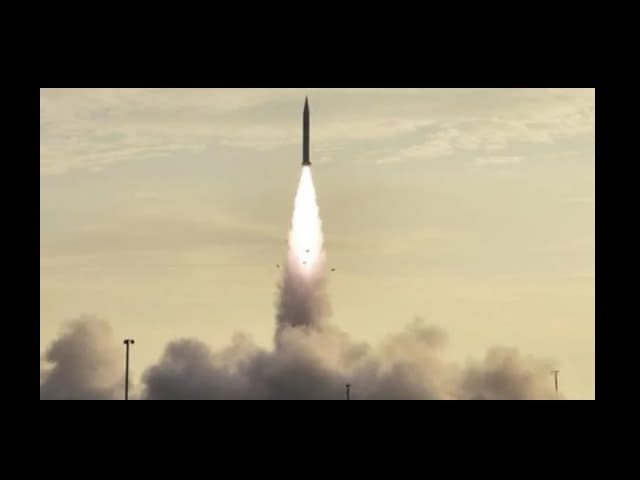Chinese officials claim to have conducted a successful flight test for their first hypersonic bomber, the nuclear-capable Xingkong-2. Hypersonic planes and missiles move so fast they are difficult to detect and nearly impossible to intercept with current technology.
China’s state-run Global Times announced the test on Sunday, hailing it as a “technological breakthrough” that could erase the U.S. technological advantage in missile defense:
Designed by the China Academy of Aerospace Aerodynamics under China Aerospace Science and Technology Corporation, the Xingkong-2, or Starry Sky-2, was launched in a target range located in Northwest China on Friday, the academy said in a statement released on its WeChat account on Friday.
Launched in a rocket, the waverider was released in the air after about 10 minutes.
It flew independently, made large-angle turning maneuvers, and landed in the targeted area as planned.
The flight vehicle reached 30 kilometers in altitude at Mach 5.5-6, the academy said.
“The Starry Sky-2 flight test project was strongly innovative and technically difficult, confronting a number of cutting-edge international technical challenges,” the China Academy of Aerospace Aerodynamics said in a social media post. The CAAA said the test was conducted somewhere in northwestern China on Friday, but did not pinpoint the exact location.
CAAA successfully test flew waverider hypersonic flight vehicle 星空/Sky star-2 in the northwest test range on Friday morning, the rocket completed active phase turning, stage/fairing separation, flight vehicle autonomous flight and high maneuvering turning in 10 minutes' flight. pic.twitter.com/LhR3OrJuRy
— dafeng cao (@dafengcao) August 3, 2018
“Waverider” technology achieves hypersonic speed (usually defined as Mach 6 and above, which the Chinese aircraft evidently came just a little short of reaching) by surfing on the shock wave created by a plane’s rapid movement through the atmosphere, a kind of aeronautical judo that turns turbulence into propulsion instead of an obstacle.
Peaceful applications of the technology could include cheaper space launches and very rapid passenger flights over long distances, but the military applications of a plane moving so fast that missiles cannot catch it and radar networks have trouble pinpointing its exact location are obvious.
The Russians have been touting hypersonic missile technology as an “invincible” superweapon that nullifies American missile shields and restores Russia’s nuclear arsenal to its formidable Cold War threat level. American military analysts concede reliable hypersonic weapons would be extremely difficult to stop with existing defense technology. This is not to say that sub-hypersonic missiles are easy to intercept, but the next-generation weapons move so quickly that early-warning time against a first strike dwindles to almost nothing.
The state of the hypersonic arms race is a topic of much speculation. The Russians claim to be within a few years of producing battlefield-ready hypersonic missiles, one of which can reportedly fly at Mach twenty.
The U.S. military tested a hypersonic plane roughly comparable to China’s waverider eight years ago and hopes to deploy hypersonic weapons by 2023. An early prototype hypersonic warplane known as the “Valkyrie” was tested by the U.S. in the 1960s, but it was much slower than modern designs and did not fare well in testing. The fastest hypersonic aircraft tested by the United States reportedly achieved Mach 20 speed, much as the Russians say their “invincible” missile did.
China’s research began in earnest around 2014 and has previously tested a Mach 10 missile with a range of about a thousand miles. The aircraft tested on Friday was clearly a test-bed that could only maintain hypersonic flight for a few minutes, but Chinese engineers expressed confidence they could produce deployable weapons on the same near-future timeline as the U.S. and Russia.
“The test showed that China is advancing shoulder to shoulder with the US and Russia,” Chinese military expert Song Zhongping told the Global Times on Sunday.

COMMENTS
Please let us know if you're having issues with commenting.